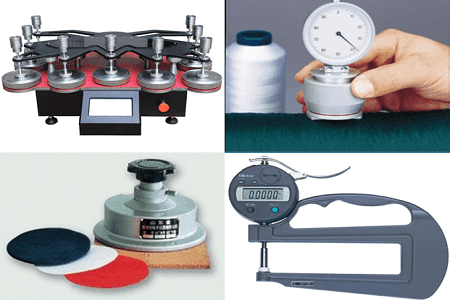
NewsInformation Center
10 Secrets About Textile Testing Equipment That Nobody Will Tell You
2023/04/06
Textile testing equipment plays a vital role in the textile industry, but many people may not be aware of the many secrets involved. In this article, we will reveal 10 secrets that people don't know about textile testing equipment.

1. They can detect many problems
Textile testing equipment can detect a large number of textile quality problems, such as breaking strength, abrasion, tears, etc. They can also detect problems with chemical composition, color stability, size, etc.

2. Different devices have different functions
Different models of textile testing equipment have different functions and capabilities. For example, some equipment can detect shrinkage and pilling of textiles." While others can test for oxidation protection, UV protection, scalability and other properties.
3. They can be used in the production process
Textile testing equipment can be used during the production process to ensure that the relevant codes and standards of the final product. In this way, manufacturers can avoid the expense and other hassles of having problems at the end.
4. They can detect pest infestations
Textile testing equipment can detect textile damage caused by pests and thus provide solutions for textile manufacturers.
5. They can be connected to cloud-based databases
Most textile testing devices can upload data to a cloud-based database and can be accessed anywhere, anytime. This way, manufacturers and designers can view the exact textile quality and factory production.
6. They can calculate the actual cost of textiles
Textile testing equipment can accurately calculate the cost of manufacturing textiles, including labor costs, raw material costs and other related costs.
7. They can be used in different environments
Textile testing equipment can be used in different environments, such as humidity, temperature and air pressure changes, to ensure the final textile quality in various environments.
8. They can be used for long-term production operations
Textile testing equipment can be used in long-term production operations so that manufacturers can analyze and compare data from each textile batch.
9. They can be maintained regularly
Textile testing equipment requires regular maintenance to ensure that they remain in good condition and perform optimally.
10. They require highly skilled error analysis specialists
When using textile testing equipment, experts with careful operation and highly skilled error analysis skills are needed. They will be responsible for operating textile testing equipment, collecting and analyzing data, and interpreting their results.
Textile testing equipment is very important to enable manufacturers to detect quality problems and predict future problems. These devices are widely used in the textile industry, but many people may not realize their many secrets. By learning these secrets, designers and manufacturers can make better use of textile testing equipment to ensure that their textiles meet industry standards and customer expectations.
Previous: Australia expects a bumper cotton harvest in 2023
N e x t : Textile Testing Equipment Will Make You Tons Of Cash Here's How!



